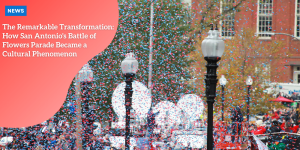Chicago’s Iconic ‘Bean’ Sculpture Welcomes Tourists Again After Nearly a Year of Renovation
CHICAGO — After nearly a year of extensive renovations, one of Chicago’s most beloved tourist attractions, known affectionately as “The Bean,” has reopened to the public.
Anúncios
This moment marks a significant milestone for the city and its visitors, who have been eagerly awaiting the chance to get up close to this iconic landmark once more.
Known for its reflective surface and sweeping shape, “The Bean” is a defining part of the city’s architectural identity.
The sculpture has become synonymous with Chicago, often featured in travel blogs, photo albums, and social media feeds as the backdrop for unforgettable memories.
Anúncios
Now, after months of renovation work, locals and tourists alike are excited to once again marvel at this impressive work of art.
A Year of Renovation and Restoration
The journey toward reopening this iconic sculpture began in earnest with renovations that kicked off in August of last year.
Anúncios
Over the course of these 12 months, construction crews worked diligently to ensure that both the statue and the surrounding public spaces would remain as enduring symbols of Chicago’s commitment to art and public access.
During this period, fencing was erected around the sculpture, significantly limiting visitor access.
For many Chicagoans and out-of-town guests, the absence of “The Bean” from their daily walks or tours of Millennium Park was noticeable.
While the renovation project temporarily closed the sculpture off to the public, it was clear that these upgrades were necessary to preserve the landmark for future generations.
The renovations were not merely cosmetic improvements; they also included vital structural updates.
According to the Chicago Department of Cultural Affairs and Special Events, the project focused on enhancing both the functionality and durability of the site.
The work on the plaza surrounding “The Bean” was extensive, incorporating the installation of new stairs, accessible ramps, and even a comprehensive waterproofing system.
These measures will ensure that the site remains in prime condition for decades to come while making it easier for all visitors to experience the sculpture firsthand.
The city’s decision to enhance accessibility reflects a broader commitment to making public art spaces welcoming to everyone, regardless of mobility or ability.
The Significance of “The Bean”
Formally known as “Cloud Gate,” the sculpture was created by the renowned British-Indian artist Anish Kapoor.
Unveiled in 2006, this stunning piece of public art has quickly become one of the most visited and recognizable structures in the world.
Weighing in at a staggering 110 tons (99.8 metric tons), “The Bean” is no lightweight, but its remarkable design belies its massive size.
The smooth, seamless shape mimics a giant drop of liquid mercury, providing an otherworldly reflection of both the sky above and the bustling activity in Millennium Park below.
Its striking surface invites visitors to stand before it, capturing their images in its polished mirror-like finish.
The design of “Cloud Gate” was not only intended to be visually engaging but also immersive.
The curved surface allows the viewer to become part of the reflection, offering a dynamic interaction between the artwork and those who engage with it.
The title “Cloud Gate” is especially meaningful, as Kapoor designed the sculpture to evoke the experience of passing through a threshold or gateway into a new realm.
The underside of the sculpture reflects the sky, creating the illusion of the viewer standing beneath floating clouds—a remarkable feat of artistic ingenuity.
Enhancements for Visitor Experience
As much as the renovation was necessary to preserve the integrity of “The Bean,” it also provided an opportunity to enhance the overall visitor experience.
The newly added stairs and accessible ramps not only ensure that those with limited mobility can experience the sculpture but also improve the flow of visitors throughout the area.
Accessibility has been a key focus of many recent public projects in Chicago, and the renovation of “Cloud Gate” is no exception.
Another key improvement made during the renovation process was the installation of a waterproofing system.
The challenge of keeping the sculpture in pristine condition is not an easy one—weather conditions, particularly rain, can affect the reflective surface and the surrounding infrastructure.
The waterproofing system has been designed to protect both the sculpture itself and the surrounding plaza from water damage, which could have long-term detrimental effects on the artwork and the visitor experience.
These efforts will safeguard the sculpture for years to come, allowing future generations to enjoy the site just as much as visitors do today.
Reopening Celebration
On the day of the reopening, city officials marked the occasion with a public announcement, signaling the return of one of Chicago’s most beloved landmarks to its rightful place in the city’s cultural landscape.
The announcement was eagerly anticipated, as it highlighted the renewed accessibility of the sculpture and reaffirmed its importance to the city’s identity.
The message was clear: the city eagerly awaits tourists’ return to this iconic landmark.
The reopening also marked a moment of reflection for Chicagoans, who proudly view “The Bean” as both an artistic triumph and a symbol of civic pride.
As the public gathered to witness the grand unveiling of the refurbished sculpture, there was a palpable sense of excitement in the air.
Locals and visitors alike snapped photos, took selfies, and marveled at the newly refurbished space.
With the surrounding plaza now enhanced with improved infrastructure, people of all ages and backgrounds could interact with the sculpture in a more comfortable and accessible environment.
The area now offers ample space to relax and enjoy the surroundings while taking in the splendor of Kapoor’s creation.
The Artist Behind the Masterpiece
Anish Kapoor, the visionary artist behind “Cloud Gate,” designed the sculpture to be both captivating and thought-provoking.
Kapoor’s work often explores themes of perception, space, and reflection.
With “Cloud Gate,” he aimed to create a piece of art that was not just visually stunning, but also capable of forging a unique relationship with its viewers.
The reflective quality of the sculpture allows those who engage with it to see themselves in relation to their surroundings, blurring the boundaries between the viewer, the artwork, and the environment.
This interaction is at the heart of Kapoor’s artistic philosophy: that art should engage the audience and spark a sense of connection and wonder.
Kapoor’s work is known for its striking simplicity, and “Cloud Gate” is a perfect example of this.
Despite its massive size, the sculpture has a sense of fluidity and grace, almost as if it is constantly shifting and changing with the weather and the movement of people around it.
This connection between the sculpture and the changing atmosphere of Chicago provides a dynamic and ever-evolving experience for visitors.
Impact on Chicago Tourism
“The Bean” is far more than just an art piece—it’s a major driver of tourism in Chicago.
The sculpture is located in Millennium Park, a hub of culture and entertainment in the heart of the city.
The park attracts millions of visitors every year, many of whom come specifically to see “Cloud Gate” and experience its unique beauty.
According to tourism experts, the reopening of “The Bean” is expected to provide a significant boost to the local economy.
Tourists flocking to the area will likely patronize nearby restaurants, shops, and hotels, contributing to the vibrancy of the local economy.
The renewed accessibility of “Cloud Gate” is sure to increase foot traffic, benefiting not just the park, but the surrounding neighborhoods as well.
Community and Cultural Significance
Beyond its economic impact, “The Bean” holds deep cultural significance for Chicagoans.
The sculpture is a testament to the city’s commitment to public art, urban revitalization, and cultural expression.
Since its unveiling nearly two decades ago, “Cloud Gate” has become a symbol of Chicago’s creativity, resilience, and forward-thinking mindset.
It represents the city’s ability to blend art, architecture, and public spaces in a way that engages and inspires the public.
The renovation of the sculpture serves as a reminder of the importance of preserving cultural landmarks for future generations.
By ensuring that “The Bean” remains in excellent condition, the city is reinforcing its commitment to preserving its artistic legacy and making it accessible to people of all backgrounds and abilities.
A Bright Future for “The Bean”
As “The Bean” reopens, it stands not only as a reminder of Chicago’s artistic achievements but also as a symbol of the city’s dedication to its cultural icons.
The completion of this renovation project represents a bright future for the sculpture, ensuring that it will continue to be a cherished part of the city’s landscape.
With improved accessibility, enhanced visitor experience, and long-term preservation efforts, “Cloud Gate” is ready for its next chapter.
Conclusion
The reopening of “The Bean” after nearly a year of renovation is a significant moment for Chicago.
The enhancements made during this period ensure that “Cloud Gate” will continue to be a beloved attraction for both locals and tourists alike.
As visitors once again flock to this iconic sculpture, they will find it more accessible and better preserved than ever before.
Whether you are a Chicago resident or a visitor from afar, make sure to visit Millennium Park and take a selfie with “The Bean” — it’s ready for its close-up.





